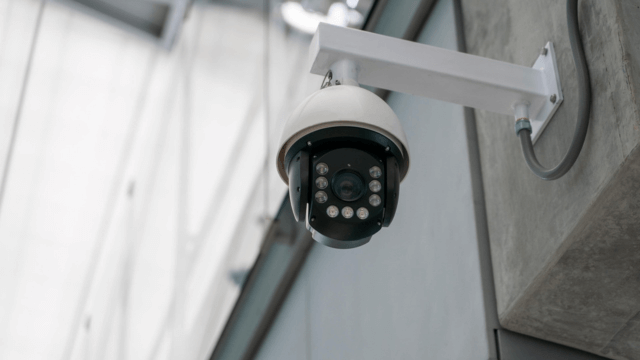Using a Video Management System to Capture, Store, and Access Security Video Streams

In an increasingly interconnected world, security and surveillance play a critical role in safeguarding people, property, and assets. Video surveillance systems have become a fundamental component of security measures for organizations, businesses, public spaces, and homes. To effectively manage and utilize the vast amount of video data generated by these systems, a Video Management System is essential.
Understanding Video Management Systems
A Video Management System like Genetec is a software solution that provides centralized control and monitoring of video cameras and devices in a surveillance network. VMS solutions are designed to help organizations effectively manage their video data, streamline surveillance operations, and enhance security.
Video Capture
The core function of a VMS is capturing video streams from connected cameras and devices. This process involves encoding, compressing, and recording video footage for real-time or later use. VMS software supports various camera types, including analog, IP, and digital cameras.

IP Camera Integration
VMS systems seamlessly integrate with IP cameras, which offer numerous advantages over traditional analog cameras. IP cameras transmit digital video data over a network, providing higher resolution, better image quality, and more advanced features.
Video Storage
VMS solutions provide efficient video storage capabilities. Video footage can be stored in a number of different ways.
- Local Storage: This involves using dedicated servers or Network-Attached Storage devices on-site to store video footage. Local storage offers low latency and high-speed access to recorded video. However, it may have limitations in terms of scalability and vulnerability to physical damage or theft.
- Network-Attached Storage: NAS devices are specialized storage appliances connected to the VMS network. They provide a centralized and expandable storage solution. NAS devices are suitable for small to medium-sized installations but may not offer the scalability required for larger deployments.
- Direct-Attached Storage: DAS involves attaching additional storage devices directly to the VMS server. It provides a simple and cost-effective way to expand storage capacity. However, it may not be as scalable or redundant as other options.
- Storage Area Network: SANs are dedicated, high-performance storage networks that offer centralized, scalable storage for VMS systems. SANs provide excellent performance and redundancy but can be complex to set up and costly.
- Cloud Storage: Cloud-based storage solutions allow VMS systems to store video footage off-site in secure data centers. Cloud storage offers scalability and remote accessibility, making it suitable for both small and large installations. However, ongoing subscription costs and potential bandwidth limitations should be considered.
- Hybrid Storage: Some VMS systems offer a hybrid approach, combining local and cloud storage. This provides the benefits of both local access and remote storage for redundancy and scalability.
Storage Management
VMS software includes storage management features that allow administrators to allocate, monitor, and optimize storage resources effectively. Features such as video retention policies, automated archiving, and storage tiering help ensure that critical footage is retained while minimizing storage costs.
Video Compression
To maximize storage efficiency, VMS systems employ video compression techniques. Common compression codecs like H.264 and H.265 reduce video file sizes without compromising image quality, making it feasible to store more footage within available storage capacity.
Event-Based Recording
VMS systems support event-based recording, which triggers video capture when predefined events occur. Events can include motion detection, access control events, alarms, and other triggers specified by administrators. Event-based recording helps conserve storage space and focuses on capturing critical incidents.
Scalability
VMS solutions are highly scalable, accommodating additional cameras and storage as your surveillance needs grow. Scalability is essential for businesses and organizations with expanding security requirements.
Video Analytics
Many VMS platforms offer video analytics capabilities, leveraging artificial intelligence and machine learning algorithms to analyze video data in real-time. Video analytics can detect and alert on specific events, such as intrusions, object recognition, facial recognition, and crowd monitoring.
Remote Monitoring
VMS software provides remote monitoring capabilities, allowing authorized users to access live video feeds and recorded footage from any location with an internet connection. This remote access is valuable for security personnel and administrators who need to monitor multiple sites or respond to incidents in real-time.
User Access Control
VMS platforms offer user access control features, ensuring that only authorized individuals can view and manage video feeds. User roles and permissions can be configured to restrict access to specific cameras or functions within the system.
Mobile Accessibility
Most modern VMS solutions provide mobile applications, enabling users to access live video and recorded footage on smartphones and tablets. Mobile accessibility enhances situational awareness and allows security personnel to respond swiftly to incidents, even when away from a central monitoring station.
Alarm Integration
VMS systems can integrate with other security systems, such as access control and alarm systems. This integration allows for coordinated responses to security events, with alarms triggering video capture and live video feeds associated with specific alarms.
Redundancy and Failover
VMS solutions often include redundancy and failover features to ensure continuous operation. Redundant servers and storage systems can automatically take over in case of hardware failures, minimizing downtime and data loss.
Video Retrieval and Playback
VMS software offers intuitive interfaces for video retrieval and playback. Users can search for specific incidents, date and time ranges, or camera locations and quickly review recorded footage to investigate security events.
Evidence Management
VMS solutions are used extensively in law enforcement and legal contexts. They support the secure storage and management of video evidence, ensuring chain of custody and compliance with legal requirements.
Integration with Third-Party Systems
VMS platforms are often compatible with a wide range of third-party systems, including access control, fire alarms, and building management systems. This integration allows for comprehensive security and building management solutions.
Data Encryption and Security
To protect sensitive video data, VMS systems incorporate data encryption and security features. Video streams and stored footage are encrypted to prevent unauthorized access and tampering.
Audit Trails and Reporting
VMS software maintains audit trails and generates reports, providing administrators with insights into system usage and user activities. This information is valuable for compliance, troubleshooting, and accountability.
Regular Updates and Support
Reliable VMS providers offer regular software updates and customer support to ensure system stability, security, and compatibility with the latest hardware and technologies.
Cost Considerations
The cost of implementing a VMS solution varies depending on factors such as the number of cameras, storage requirements, and the complexity of the system. However, the long-term benefits of enhanced security, efficient surveillance, and reduced incident response times often justify the investment.
A Video Management System is a crucial tool for capturing, storing, and accessing security video streams in today’s interconnected world. By leveraging a VMS, organizations can enhance their security posture, improve incident response, and achieve greater operational efficiency in safeguarding people, property, and assets.





